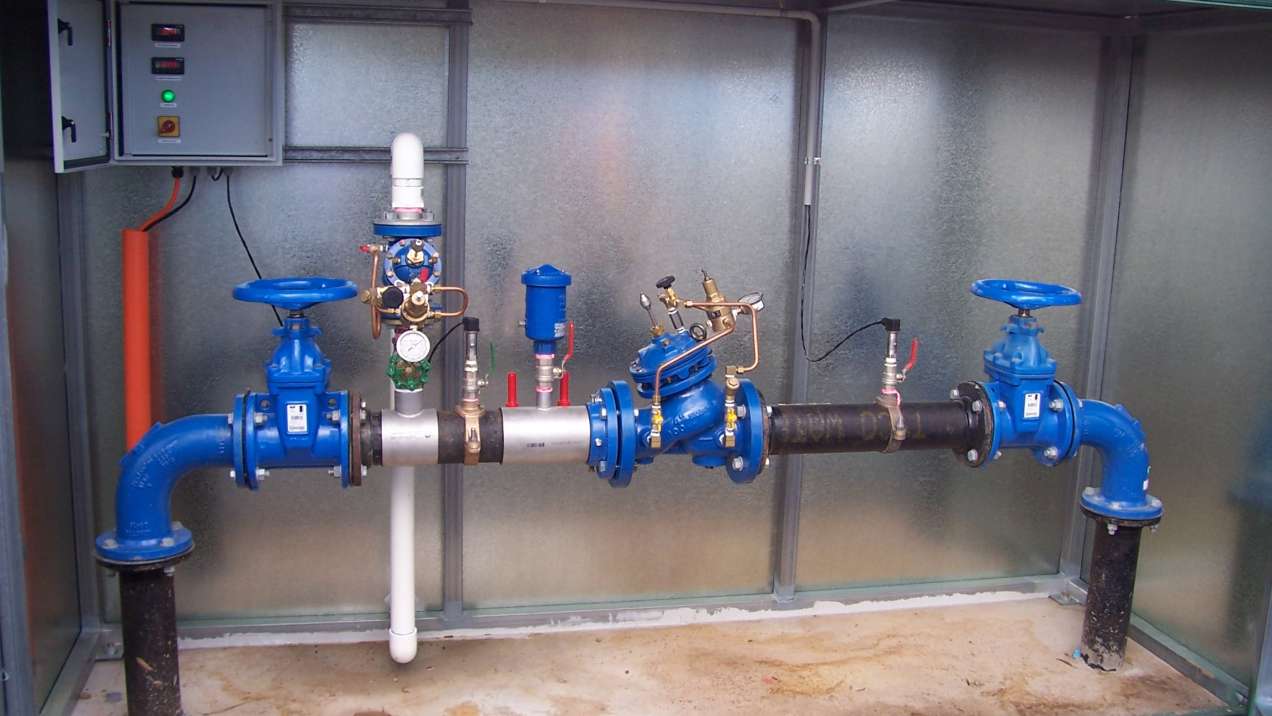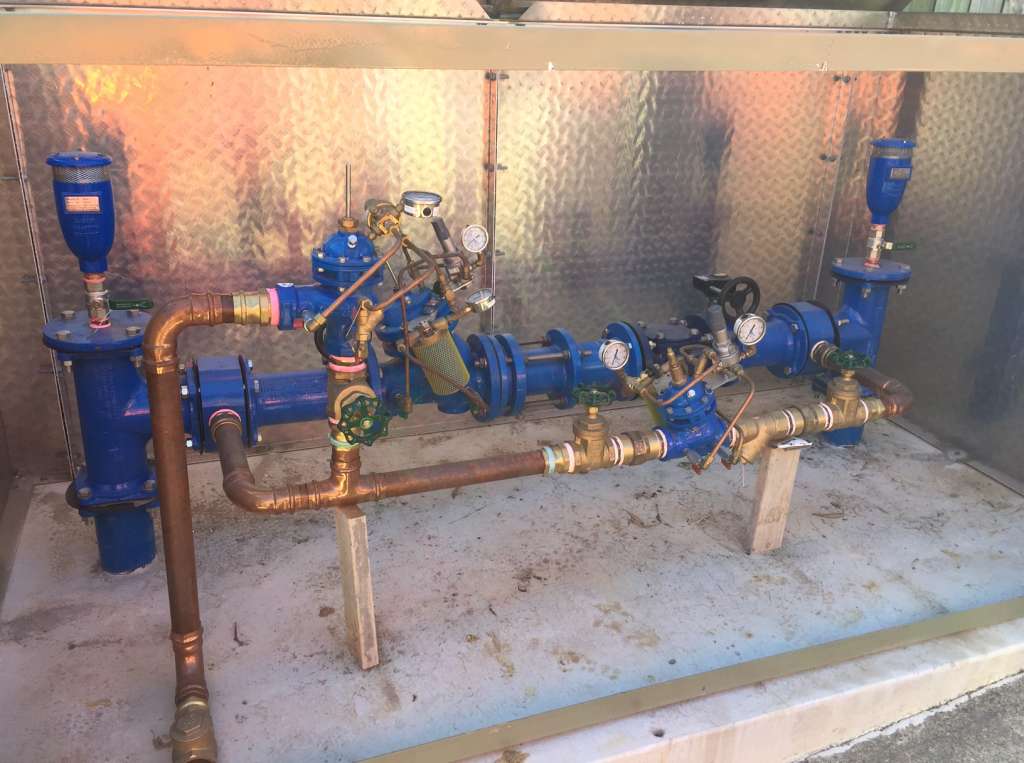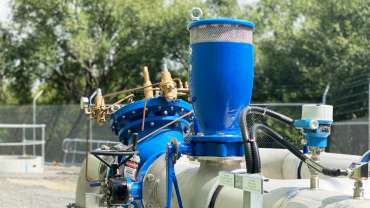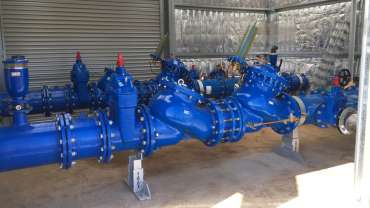![100_1556 Valves at a pressure station]()
When it comes to relief valves, you have a range of options in terms of the model and size of valve you select.
In this piece, you’ll learn why pressure relief valves are useful, find recommendations for a range of models depending on your application and objectives, and learn how to choose the correct size for a relief valve.
Why do we need a downstream pressure relief valve?
In a water supply pressure reducing station, the control valves regulating pressures to the network are generally accurate regardless of flow rate and inlet pressure range.
There are several key reasons why the regulated downstream pressure may vary:
- If control valves are not maintained within the designed service intervals the accuracy of regulation can reduce, causing variable downstream pressure.
- If you have applications within the network where there are rapid changes in flow (for example, closure of hydrants or main line isolation valves), short burst pressures may be generated which are above the normal accuracy of the pressure reducing valves.
- If you have pumping stations—either upstream or downstream of the pressure reducing valves—that generate rapid variation of flow and pressure, the valves may momentarily work out of specification.
- If the network being supplied by the pressure reducing station is extremely old and fragile—or has AC pipe—variable pressure can be problematic. In this instance, pipe failure is a real problem if something goes wrong.
- Should a large solid come through the pipeline and become lodged inside the pressure reducing valve (such as a lump of concrete, eel, fish, or piece of construction debris, for example), the pressure reducing valve may be unable to close. This will ultimately increase downstream pressure.

What are the solution options?
The optimum solution for a pressure relief valve is a product that Bermad have manufactured with a similar tolerance of supply to the pressure reducing valve; namely the model 73Q or 730 valve.
Both of these configurations are designed to open and relieve excessive pressure, and smoothly close after the surge or higher pressure condition has been rectified.
Model 73Q
This pressure relief valve features a rapid opening speed and controlled slower shut-off to relieve the surge.
Find out more about the model 73Q
Model 730
This sustaining relief valve has a moderately fast opening speed and a variable closing speed, regulated by a needle valve.
Find out more about the model 730
Model VRCA
This direct-acting valve is primarily designed for extremely fast opening to mitigate fast-moving transient pressures.
Find out more about the model VRCA
How to choose the correct valve size
The optimum size will depend on the application and the rationale behind selecting a specific valve.
Typically, you would size a relief valve with a flow capacity of between 20-40% of the pressure reducing station.
You can also size the relief valve to operate at considerably higher velocities, as the valve is likely only periodically engaged in rare events.
To be sure of the optimum solution, contact your local area Bermad technical engineer for specific insights into your particular application.
How to set and operate a relief valve
The following video highlights the setting and operation of the relief valve.
Looking for additional support? We’re here to help
Here at Bermad, we’re committed to providing the information you need for products, technology, and operating systems.
If you have any further questions, require additional details or wish to discuss any technical aspects of relief valves, you can contact your local Bermad technical engineer, visit our YouTube channel, or view more ‘how-to’ articles.
Make enquiry
Online Enquiry Close

When it comes to relief valves, you have a range of options in terms of the model and size of valve you select.
In this piece, you’ll learn why pressure relief valves are useful, find recommendations for a range of models depending on your application and objectives, and learn how to choose the correct size for a relief valve.
Why do we need a downstream pressure relief valve?
In a water supply pressure reducing station, the control valves regulating pressures to the network are generally accurate regardless of flow rate and inlet pressure range.
There are several key reasons why the regulated downstream pressure may vary:
- If control valves are not maintained within the designed service intervals the accuracy of regulation can reduce, causing variable downstream pressure.
- If you have applications within the network where there are rapid changes in flow (for example, closure of hydrants or main line isolation valves), short burst pressures may be generated which are above the normal accuracy of the pressure reducing valves.
- If you have pumping stations—either upstream or downstream of the pressure reducing valves—that generate rapid variation of flow and pressure, the valves may momentarily work out of specification.
- If the network being supplied by the pressure reducing station is extremely old and fragile—or has AC pipe—variable pressure can be problematic. In this instance, pipe failure is a real problem if something goes wrong.
- Should a large solid come through the pipeline and become lodged inside the pressure reducing valve (such as a lump of concrete, eel, fish, or piece of construction debris, for example), the pressure reducing valve may be unable to close. This will ultimately increase downstream pressure.
What are the solution options?
The optimum solution for a pressure relief valve is a product that Bermad have manufactured with a similar tolerance of supply to the pressure reducing valve; namely the model 73Q or 730 valve.
Both of these configurations are designed to open and relieve excessive pressure, and smoothly close after the surge or higher pressure condition has been rectified.
Model 73Q
This pressure relief valve features a rapid opening speed and controlled slower shut-off to relieve the surge.
Find out more about the model 73Q
Model 730
This sustaining relief valve has a moderately fast opening speed and a variable closing speed, regulated by a needle valve.
Find out more about the model 730
Model VRCA
This direct-acting valve is primarily designed for extremely fast opening to mitigate fast-moving transient pressures.
Find out more about the model VRCA
How to choose the correct valve size
The optimum size will depend on the application and the rationale behind selecting a specific valve.
Typically, you would size a relief valve with a flow capacity of between 20-40% of the pressure reducing station.
You can also size the relief valve to operate at considerably higher velocities, as the valve is likely only periodically engaged in rare events.
To be sure of the optimum solution, contact your local area Bermad technical engineer for specific insights into your particular application.
How to set and operate a relief valve
The following video highlights the setting and operation of the relief valve.
Looking for additional support? We’re here to help
Here at Bermad, we’re committed to providing the information you need for products, technology, and operating systems.
If you have any further questions, require additional details or wish to discuss any technical aspects of relief valves, you can contact your local Bermad technical engineer, visit our YouTube channel, or view more ‘how-to’ articles.
Make enquiry



